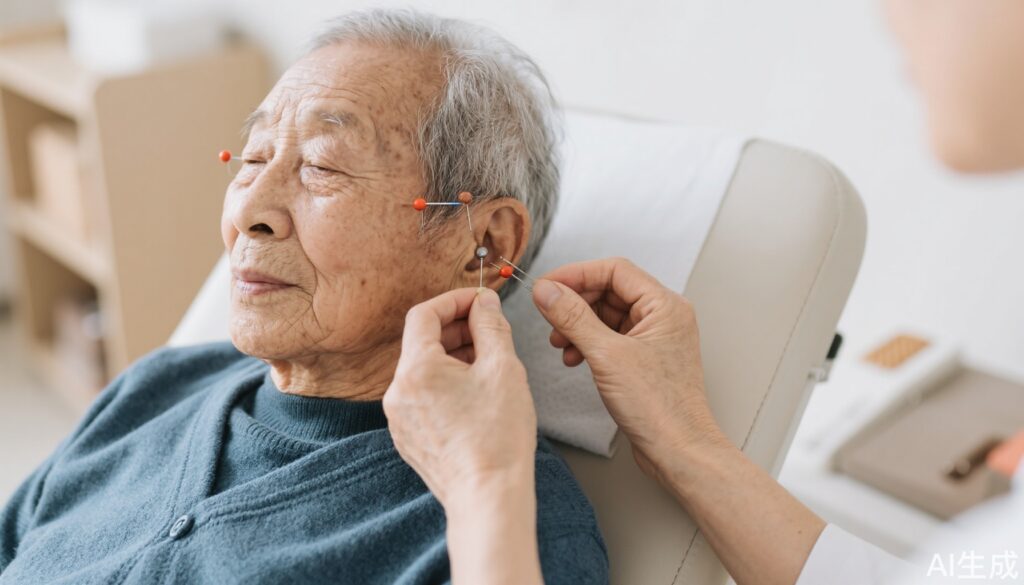Background
The increasing prevalence of Type 2 diabetes, especially among older adults, presents a significant public health challenge. As this population ages, the complexities of managing diabetes, coupled with stress and sleep disturbances, necessitate innovative and effective treatment strategies. Many individuals are turning towards complementary therapies, seeking options that may improve their quality of life alongside conventional medical treatments. Auricular acupressure, a non-invasive form of acupuncture focusing on specific points within the ear, has emerged as a compelling alternative aiming to manage symptoms associated with diabetes, specifically targeting glycemic control, stress reduction, and sleep improvement.
Purpose of the Study
This randomized controlled trial aimed to evaluate the effects of auricular acupressure on glycemic markers, subjective stress levels, and sleep quality in older adult patients diagnosed with Type 2 diabetes in South Korea. Given the potential benefits highlighted in prior studies, this research sought to quantify the impact of this complementary treatment.
Study Design
The study comprised a total of 51 older adult participants, divided into two groups: 25 in the intervention group receiving auricular acupressure and 26 in a placebo group. The intervention group received therapy over eight weeks, participating in weekly acupressure sessions focusing on specific acupoints associated with diabetes, stress relief, and enhanced sleep. In contrast, the control group was treated with unrelated acupoints, ensuring that any observed effects could be attributed to the targeted therapy.
Participants were assessed on both subjective and objective measures throughout the study. Subjective indicators included validated stress and sleep scales, while objective measures comprised blood tests for glycemic markers, heart rate variability analysis, and sleep activity recorders.
Key Findings
The study yielded significant findings regarding glycemic control and autonomic nervous system activity. Post-intervention, statistically significant differences were documented in blood sugar levels _(F = 5.20, p < .001)_ and glycated hemoglobin levels _(Z = -2.345, p = .019)_ between the auricular acupressure and placebo groups. Importantly, however, no significant differences were found regarding glycated albumin or fructosamine levels.
Further analysis indicated notable variations in autonomic nervous system activity, as evidenced by heart rate variability metrics, suggesting a positive influence of acupressure on both sympathetic and parasympathetic nervous system modulation.
Although subjective indicators of sleep quality did not show significant between-group differences, objective measures revealed notable changes in sleep patterns; specifically, reductions in the number of awakenings and the duration of awakenings were found, alongside improvements in durations of both REM and deep sleep. These findings imply that auricular acupressure may promote better sleep quality, which is crucial for overall health and effective diabetes management.
Expert Commentary
While the study presents compelling evidence supporting auricular acupressure’s role as a complementary therapy in managing diabetes, it is crucial to note the limitations in the reported effects’ magnitude. Other studies focusing on the same or similar interventions may yield varying results based on population diversity, methods of acupressure delivery, and differing assessment tools.
Additionally, as with many complementary therapies, questions may arise regarding the generalizability of findings across different demographic groups or clinical settings. Nonetheless, the potential for auricular acupressure as part of a holistic approach to diabetes management cannot be overlooked—especially for populations that may benefit from alternative therapies alongside their standard treatment plan. Further exploration in larger, more diverse cohorts is suggested to substantiate these findings and enhance understanding of the biological mechanisms at play.
Conclusion
In conclusion, the results of this study highlight auricular acupressure as a potentially effective intervention for older adults managing Type 2 diabetes. While the observed effects on glycemic control, stress levels, and sleep quality reflect initial promising outcomes, further research is needed to elucidate the clinical relevance and applications of such complementary therapies in routine diabetes management. Establishing auricular therapy as a standard nursing intervention may provide healthcare practitioners with additional tools to improve patient care outcomes and enhance patients’ overall well-being.


